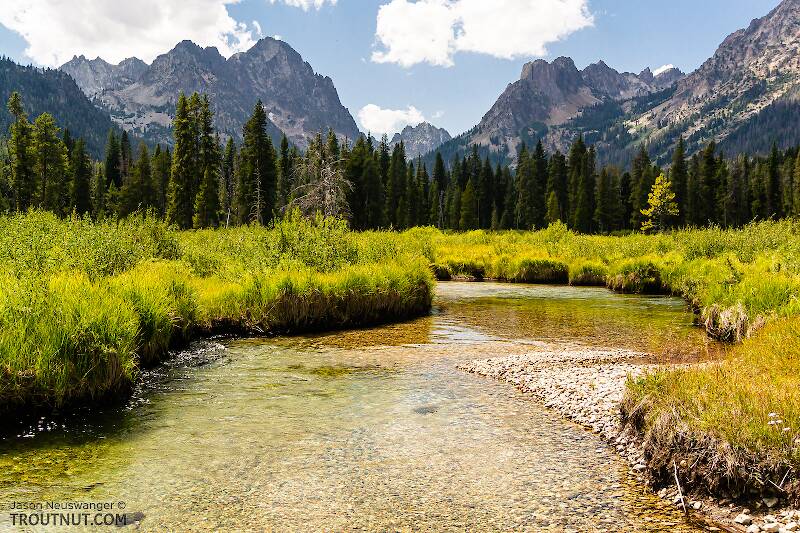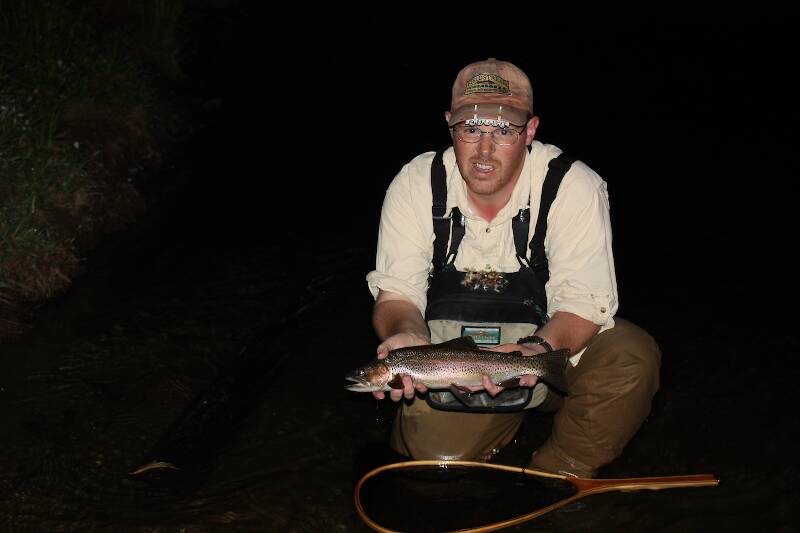
Hex Mayflies
Hexagenia limbata
The famous nocturnal Hex hatch of the Midwest (and a few other lucky locations) stirs to the surface mythically large brown trout that only touch streamers for the rest of the year.
Featured on the forum

Troutnut is a project started in 2003 by salmonid ecologist Jason "Troutnut" Neuswanger to help anglers and
fly tyers unabashedly embrace the entomological side of the sport. Learn more about Troutnut or
support the project for an enhanced experience here.
Goose
Posts: 77
Posts: 77
Goose on Sep 18, 2006September 18th, 2006, 1:47 am EDT
Hi Jason: Being that the bottom side of a BWO is a medium to light olive in color, why do people tend tie them in dark olive or even gray? The fish only see the bottom. Just wondering.
Troutnut on Sep 18, 2006September 18th, 2006, 7:08 am EDT
BWO colors really run the gamut, because they can belong to several dozen different mayfly species. Some are light and some are darker.
Patterns do seem to be a bit on the dark side. This might have something to do with the common name. People think "olive" should be the shade of a green olive, which is too dark for a lot of the species. Then the patterns get even darker when they're wet.
The effect might seem a little worse when you look at the pictures on this site, because I photograph mayflies under really bright light to show the hues and patterns well. Under normal conditions they'll look a bit darker than they appear in my photos.
Patterns do seem to be a bit on the dark side. This might have something to do with the common name. People think "olive" should be the shade of a green olive, which is too dark for a lot of the species. Then the patterns get even darker when they're wet.
The effect might seem a little worse when you look at the pictures on this site, because I photograph mayflies under really bright light to show the hues and patterns well. Under normal conditions they'll look a bit darker than they appear in my photos.
Jason Neuswanger, Ph.D.
Troutnut and salmonid ecologist
Troutnut and salmonid ecologist
Sayfu
Posts: 560
Posts: 560
Sayfu on Mar 27, 2013March 27th, 2013, 1:23 pm EDT
A guide that I have always respected for his fly fishing knowledge, a Montana Guide who guided on the Missouri River, and a trib, the Smith river, Neal Streaks, wrote that his effective dry for BWO's was a gray bodied Parachute Adams. He didn't feel a need to match the exact body color.
JOHNW on Mar 27, 2013March 27th, 2013, 3:56 pm EDT
Goose,
In fishing many of the same streams as you I have found that fly rite #10 is a very good color for the early baetids, while something leaning more to the gray end of the spectrum is more suitable for the big summer BWO's (cornutas I believe). Although the ones I examined most recently were almost the same dun color as the wing.
JW
In fishing many of the same streams as you I have found that fly rite #10 is a very good color for the early baetids, while something leaning more to the gray end of the spectrum is more suitable for the big summer BWO's (cornutas I believe). Although the ones I examined most recently were almost the same dun color as the wing.
JW
"old habits are hard to kill once you have gray in your beard" -Old Red Barn
Quick Reply
Related Discussions
Topic
Replies
Last Reply
12
Feb 7, 2020
by Jmd123
by Jmd123




